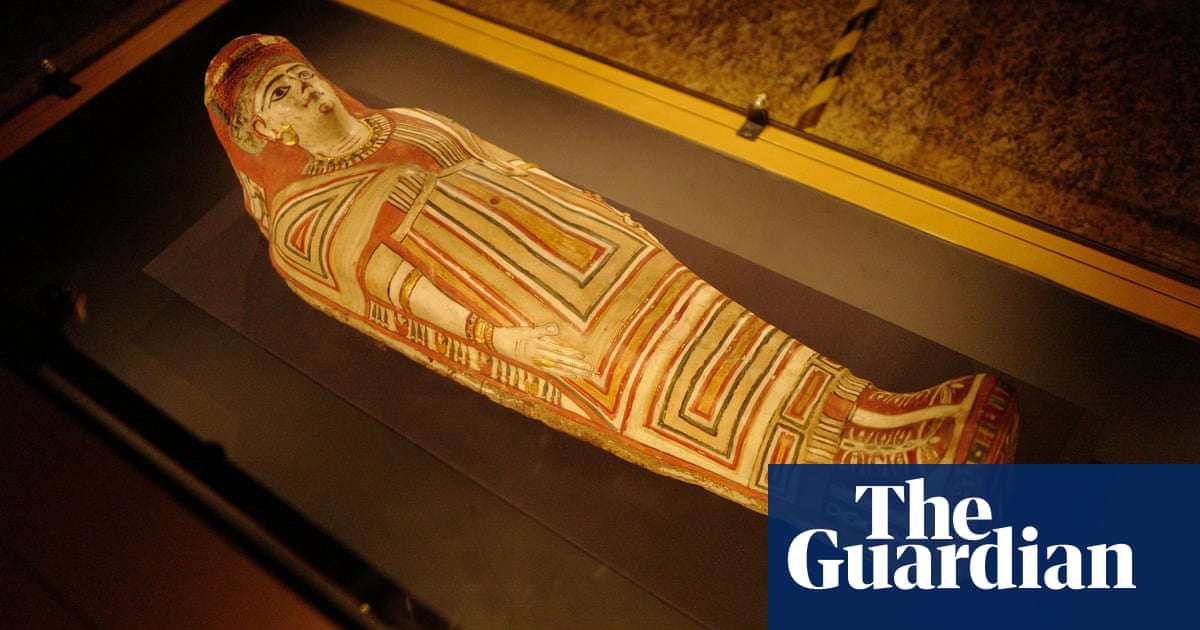
Take a look at our newest merchandise
Spicy, woody and candy: it seems like an outline of a elaborate air freshener. However researchers say the combination of aromas come up from one thing quite completely different: mummies.
Researchers have used each human noses and scientific devices to probe how historic Egyptian mummies scent right now, and to what extent the odours mirror the supplies used throughout the mummification course of.
The concept, they are saying, is that scent may supply a non-invasive solution to choose how well-preserved a mummy is, thereby eradicating the necessity to take samples from the mother itself.
“From the point of view of the heritage scientists working with historic supplies, not touching an object and analysing it’s actually like [the] holy grail,” mentioned Prof Matija Strlič, the co-author of the analysis from the College of Ljubljana and College Faculty London (UCL).
“The opposite motivation to do that analysis is to supply curators with [a] artificial mummy scent, artificial scent of mummified our bodies that they’ll then use to have interaction audiences,” he mentioned.
Writing within the Journal of the American Chemical Society, Strlič and colleagues reported how they studied 9 mummies saved on the Egyptian Museum in Cairo, relationship from the New Kingdom to the Roman interval, a timeframe starting from about 1500BC to about AD500. Whereas some had been wrapped, others weren’t, with some mummies housed in stone, picket or terracotta sarcophagi.
The group used small tubes and pumps to extract air from round every mummy. Every pattern was sniffed from a bag by eight educated consultants, who rated them for the depth of 13 several types of odour.
Whereas the aromas different between the mummies, they had been typically judged to scent nice. Amongst different outcomes, seven of the 9 mummies had been deemed to have a “woody” element to their scent, six had a “spicy” element, 5 had a “candy” side, and three had been deemed to have “incense-like” notes. Nonetheless some had been judged to have a “stale, rancid” element or perhaps a mouldy odour.
The group then used a system referred to as fuel chromatography-mass spectrometry-olfactometry to establish the completely different particular person risky compounds inside samples. As soon as remoted, these substances had been additionally sniffed by educated consultants.
The group discovered the general aroma of the mummies didn’t needed align with these anticipated from these substances, highlighting the complicated nature of human odour notion.
They added that these particular person elements got here from 4 most important sources: supplies used throughout the mummification course of, substances given off by microbes, artificial pesticides and repellants, and plant oils utilized in conservation.
Whereas exhibited mummies confirmed a better vary and better focus of gear than these in storage, probably as a result of they had been housed in show circumstances, there have been no constant variations primarily based on the age of the mummies or how well-preserved they had been.
Strlič mentioned one issue is that a number of the plant oils utilized in conservation had been additionally used for mummification. He added it will now be attention-grabbing to hold out analyses on mummies that haven’t been handled for conservation, noting these could be anticipated to vary in scent primarily based on the standard of their mummification.
after e-newsletter promotion
Dr Cecilia Bembibre, one other co-author of the work from UCL and one of many educated sniffers, mentioned it was each thrilling and a privilege to scent the previous.
“Simply the thought you could put your nostril to that little tube and scent a mummified physique with 3,500 years of historical past after which, probably the most stunning factor, nonetheless get a whiff of one thing so extremely acquainted as tea … that was stunning, as a result of some smells had been actually acquainted,” she mentioned.
Barbara Huber of the Max Planck Institute of Geoanthropology, who was not concerned within the work, welcomed the analysis however burdened the smells detected right now usually are not the identical as these current when the physique was first mummified.
Huber and colleagues have beforehand recognized and recreated the scent of balms used within the mummification of an historic Egyptian noblewoman referred to as Senetnay, who lived round 1450BC.
“Whereas neither strategy can totally recreate the precise perfume of the previous, each carry us nearer to understanding how mummies had been ready, what supplies had been used, and the way scent performed a job in historic rituals and beliefs,” she mentioned.





![[2024] MSI Aegis R2 C14NUF9-829US (Intel Core i9-14900F, 128GB DDR5 RAM, 2X 2TB NVMe SSD, NVIDIA GeForce RTX 4070 Ti Super, Windows 11) Gaming Desktop PC](https://m.media-amazon.com/images/I/81i1KVslX4L._AC_SL1500_.jpg)







